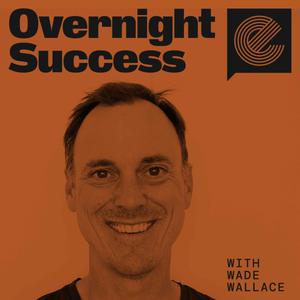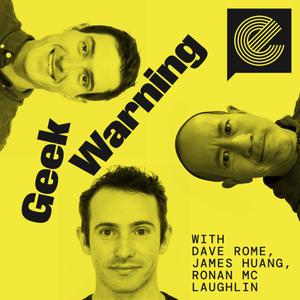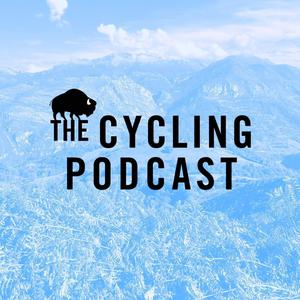
Overnight Success
Wade Wallace
There's no such thing...
- 55 minutes 55 secondsHow the ASO aquired the Tour de France
Welcome to this special episode where we dive deep into one of cycling's oldest, most fascinating, and perhaps largely unknown stories - how a single French family, best known as their business entity the Amaury Sporting Organisation or ASO, came to control the Tour de France, the world's most famous bicycle race. Because, if you recall, they didn’t invent the TdF. A little french newspaper called L’Auto did.
Today we're exploring this remarkable story detailed in Alex Duff's book "Le Fric" (which is slang in french for The Money) and we’ll be speaking with Alex himself about this incredible saga of family, power, and money. Alex is a UK born sports journalist and author of 3 books who has spent much of his career covering the intersection of business, money, and sports.
To understand the ASO and the grip they have on the crown jewel of professional cycling, you need to understand the history of the Tour de France and how the Amaury family acquired it. History, national pride, politics and legacy mean so much more than money to this family, and is why the Tour de France will likely never have a price tag put on it.
22 January 2025, 10:01 pm - 1 hour 27 minutesBuilding the Cape Epic
The Cape Epic is widely regarded as the crown jewel in mountain bike stage racing. Many notable legends of the sport have called it the Tour de France of mountain biking. So how did Kevin Vermaak, a 30-year-old man new to mountain biking create a cultural phenomenon in the MTB world in the far away land of South Africa? This is his remarkable story...
If you like this podcast and want to hear more, please support our work by becoming a member: https://escapecollective.com/member/
20 November 2024, 11:20 pm - 56 minutes 32 secondsBuilding Liv/Giant Bikes
You could argue that Bonnie Tu is the most powerful woman in cycling, although she wouldn’t think of describing herself that way. She’s best known for being the face of the Liv brand she created back in 2008, but more than that she’s chairperson of the largest bike brand in the world: the Giant Bicycle Group. What does that mean? Quite simply, she runs the entire company.
Giant Bicycles is a US$2.1 billion-per-annum publicly traded company that produces millions of bikes per year, while also serving as manufacturer for some of the largest and most reputable bike brands.
Giant was founded in 1972. That’s 48 years ago, and Bonnie was one of the founding shareholders. As you’ll hear, she has been very influential in many of the company’s foundations and its pathway up until now.
This is the growth story of Bonnie Tu and not necessarily the story of Giant Bicycles or Liv. But they’re so intertwined that it’s hard not to tell one without the other.
24 October 2024, 2:32 am - 1 hour 23 minutesBuilding Rapha
In recent years Rapha has been one of the most innovative, aspirational and disruptive businesses in cycling and Simon Mottram is the mastermind behind the brand. He took the company from a single idea, with the premise of how he felt about road cycling and how he wanted it portrayed. From a single jersey that wasn’t even ready in time for the company launch during in 2004, he build Rapha into the darling child of cycling brands that inspired an entirely new market of ‘micro apparel brands’ and showed many others of the cycling industry the power of storytelling and looking at the sport differently.
This is Simon’s remarkable story of how he built Rapha.
20 September 2024, 6:15 am - 1 hour 9 minutesBuilding Zwift (replay on their 10th anniversary)
Indoor training has been around for longer than I can remember, but when Zwift came along in 2014 it changed the market forever. The company came into the world with bold ambitions, reimagined the space and what it could become, and has grown the market to a size that nobody could have imagined.
Some of the earliest pioneers in the indoor virtual world space were the likes of Computrainer and Tacx back in the late 90s, early 2000s. But they never really delivered on the promise of making indoor training much more enjoyable. They can’t be blamed for lack of vision or not trying – the technology wasn’t even there at the time. Social networks didn’t exist, multi player online games weren’t around, broadband speeds were slow and wireless protocols such as ANT+ and BTLE hadn’t been invented yet.
But, in 2010 when a gaming software developer in Southern California named Jon Mayfield began tinkering with his kinetic trainer and finding ways for it to communicate with a virtual world he built, he had no idea how big this would become.
Escape Collective is entirely member-funded. If you like this podcast please consider supporting us by becoming a member: https://escapecollective.com/member/
5 September 2024, 3:58 am - 1 hour 8 minutesBuilding Canyon Bikes (Replay)
To most of us it would seem inconceivable to build one of the biggest bike brands in the world from absolutely nothing. Think of the capital it would require, the global distribution network, complex supply chains, logistics, manufacturing, sales, design … It’s a daunting endeavour and hard to imagine where you’d even begin.
Well, it didn’t start with all of those elements in mind. Roman Arnold, Canyon's founder, simply started cycling as a way of competing for recognition and approval from his father over his three brothers. His father sold bike parts at his weekend races to help pay for the hobby. And the rest is history.
He started from humble beginnings, got his hands dirty, educated himself, and grew Canyon to be one of the largest cycling brands on the planet through baby steps, hard work, diligent spending and most of all, a true passion for cycling.
For a brand that feels so young and progressive, some might mistake it for an overnight success. But as you’ve now learned it’s been over 45 years in the making, one small step at a time with the resources that Mr Arnold has had right in front of him.
This is Roman’s remarkable story of how he build Canyon Bicycles.
3 September 2024, 6:44 am - 1 hour 47 minutesBuilding Cervelo (Replay)
Many would argue that Cervélo is one of the most innovative bike brands in the cycling industry. Back in the 1990s when they first started, almost everyone else was focusing on lightweight bikes. Cervélo, meanwhile, was busy pioneering bicycle aerodynamics. I’ve ask engineers at various bike companies which brand impresses them most with regards to engineering and innovation, and overwhelmingly I hear them say Cervélo.
The genesis of Cervélo started in 1995 when two young engineering students named Phil White and Gerard Vroomen met in the composites lab at McGill University in Canada. Over a span of 15 years they went from building a crazy aerodynamic time trial bike as a university project to creating one of the most disruptive and loved bike brands in the world.
But what many people don’t know is that as wildly successful Cervélo was up until 2011, it was a pressure cooker of constant financial challenges which ultimately led to Gerard and Phil selling the business to Dutch holding company, PON. 2008-2011 had been the perfect storm for Cervélo with the global financial crisis, setting up a professional team that was far more successful than anticipated, and a private lender which led to the company’s turn of events.
Escape Collective is entirely member-funded. If you like this podcast please consider supporting us by becoming a member: https://escapecollective.com/member/
27 August 2024, 1:15 am - 1 hour 3 minutesOvernight Success: Building Factor Bikes
For many years, bike brands have been known to collaborate with automobile and Formula 1 companies in order to align themselves with their halo of high level performance, innovation and technology. But factor bikes started in reverse to that. Factor might seem like a relative newcomer in the market, and that's partially true. It's been a mere eight years since their bikes became widely available, but they got their start almost 16 years ago when a gentleman named John Bailey came along, who owned a Formula One data measurement and composites company. His company was called British Formula One, or BF-1 for short. John wasn't even a cyclist, but he wanted a project for his team of engineers to work on that showcased BF-1's capabilities and technology to his automotive market. He did this by launching a bike into the future and breaking every rule in the book.
If you enjoyed this and want to hear more, please become a member of Escape Collective by joining here: https://escapecollective.com/member
16 August 2024, 8:54 pm - 1 hour 27 minutesHow the founders of Kona Bikes saved their company
It’s been said that Kona is 'The Smallest Biggest Bike Company in the World'. They’re best known as the quintessential North Shore bike brand, yet their global head office is just down over the border in Ferndale, Washington.
The quirky company stood out with outrageous bike model names such as the Stinky Dee-Lux, Sex One, Sex Too, and, Jackshit, which placed them well and truly as the "alternative" bicycle company.
The business was founded by Dan Gerhard, Jacob Heilbron in Vancouver, BC along with mtb hall of famer Joe Murray as their designer.
With a rich history of iconic bikes and factory race teams, it was all overshadowed by the recent events of their former owners, Kent Outdoors, who were responsible for running Kona into the ground (my words, not theirs) before the original founders bought the company back last month.
Only a few weeks after Dan and Jake bought the company back, I spoke to Jake about Kona’s founding story that dates back to 36yrs ago in 1988, the sale of the business to a private equity-backed company, and what happened that led them to buying Kona back.
If you like this podcast and want to hear more, please support our work by becoming a member: https://escapecollective.com/member/
7 June 2024, 12:37 am - 1 hour 29 minutesIndustry Special Q&A: Buyer ethics, Brexit, advocacy and more...
In our final episode of this limited series, we turn the floor over to member questions. Thank you to everyone who became members throughout this series. Every single one of you helps make us produce more content like this. If you're not a member, you can join here: https://escapecollective.com/join/
You can listen another podcast you'll enjoy about 'Why are modern bikes so expensive' podcast here: https://escapecollective.com/why-are-modern-bikes-so-expensive/
25 March 2024, 8:32 pm - 1 hour 6 minutesHow did the bike industry get into such deep trouble? EP4: The Aftermath
In EP3, we heard about what much of the bike industry experienced during that dramatic slowdown of bike sales, and what resulted. In this episode, EP4, we'll hear about some of the learnings and takeaways from the past three years, and put forward some tough questions for the bike industry to ask itself.
26 February 2024, 12:10 am - More Episodes? Get the App
Your feedback is valuable to us. Should you encounter any bugs, glitches, lack of functionality or other problems, please email us on [email protected] or join Moon.FM Telegram Group where you can talk directly to the dev team who are happy to answer any queries.
 Life in the Peloton, presented by MAAP
Life in the Peloton, presented by MAAP
 Bobby and Jens
Bobby and Jens
 Breakfast With Boz Presented by Wahoo
Breakfast With Boz Presented by Wahoo
 Tour de France Daily
Tour de France Daily
 Geek Warning
Geek Warning
 The Cycling Podcast
The Cycling Podcast